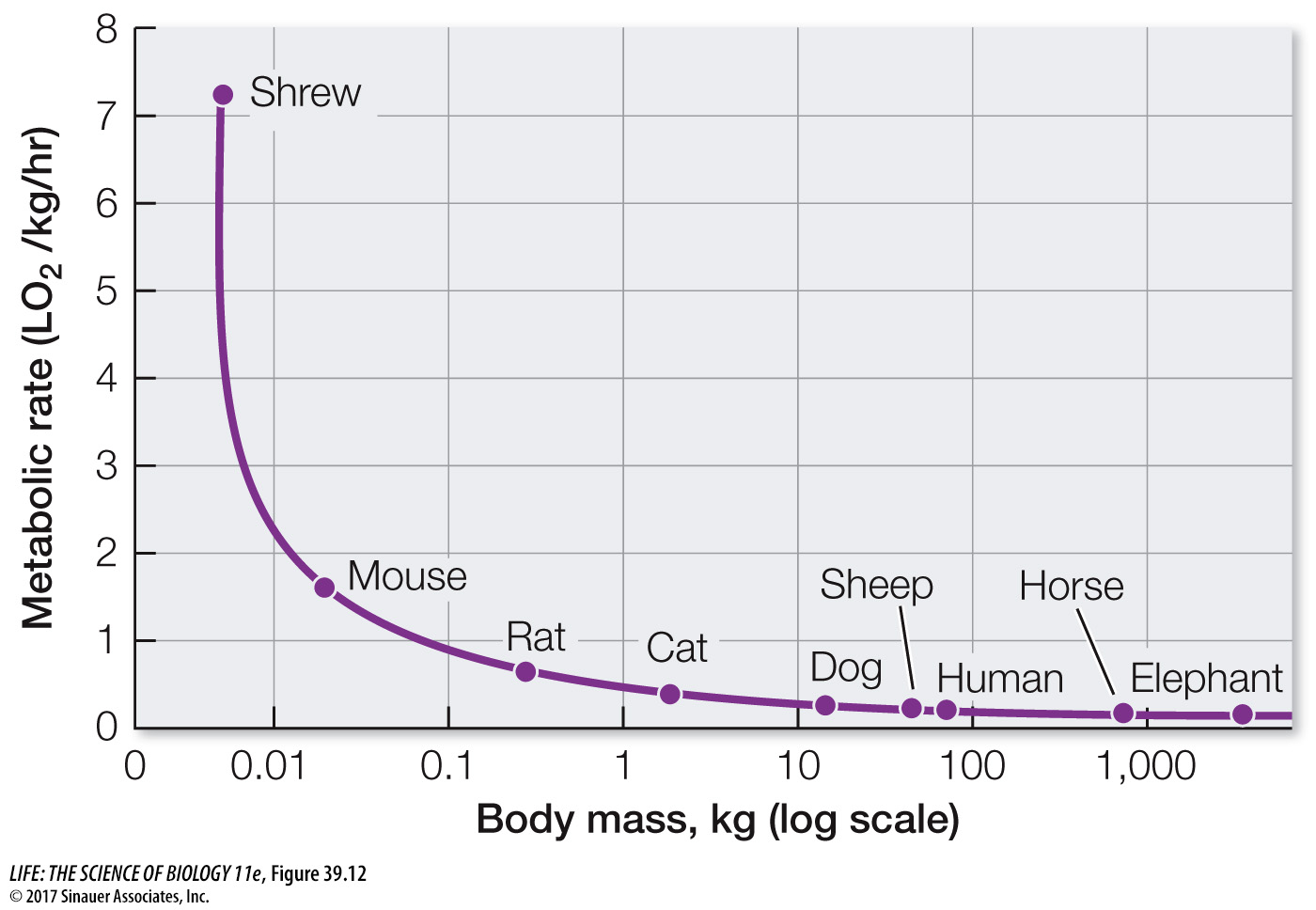Basal heat production rates of endotherms correlate with body size
Physiologists can determine an animal’s metabolic rate and therefore its rate of heat production by measuring its consumption of O2 or production of CO2. Within a narrow range of environmental temperatures, called the thermoneutral zone (see Figure 39.9B), the metabolic rates of endotherms (birds and mammals) are at low levels and independent of environmental temperature. The metabolic rate of a resting endotherm at a temperature within its thermoneutral zone is its basal metabolic rate (BMR). BMR is usually measured in animals that are quiet but awake and not using energy for digestion, reproduction, or growth. Thus BMR is the rate at which a resting animal is consuming just enough energy to carry out its minimal body functions.
As you might expect, the BMR of an elephant is greater than that of a mouse. After all, the elephant is more than 100,000 times larger than the mouse. However, the BMR of the elephant is only about 7,000 times greater than that of the mouse. That means that a gram of mouse tissue uses energy at a rate 15 times greater than a gram of elephant tissue (Figure 39.12). Across all of the endotherms, BMR per gram of tissue increases as animals get smaller.

Question
Q: Only 9 species are shown on this curve, but hundreds of species from the tropics to the artic fit on this curve as well. What does that fact allow you to conclude about whether or not basal metabolic rate is an adaptation to climate?
The fact that both Arctic and tropical mammals fall on this same curve means that BMR has not evolved as an adaptation to climate. If the BMR of arctic mammals was elevated to counter increased heat loss to the environment, the data points for arctic mammals should fall above the curve and the data points for tropical mammals should fall below the curve.
Why should this disproportionate difference exist? There are several possible reasons. As animals get bigger, they have a smaller surface area-
For an endotherm, a metabolic rate versus environmental temperature curve represents the integrated response of all the animal’s thermoregulatory adaptations (Figure 39.13). The thermoneutral zone is bounded by a lower critical temperature and an upper critical temperature. When the environmental temperature is within the thermoneutral zone, an endotherm’s thermoregulatory responses do not require much energy and could be considered passive; such responses include changing posture, fluffing fur or feathers, and altering blood flow to the skin. Outside its thermoneutral zone, however, an endotherm’s thermoregulatory responses are active and require metabolic energy.
